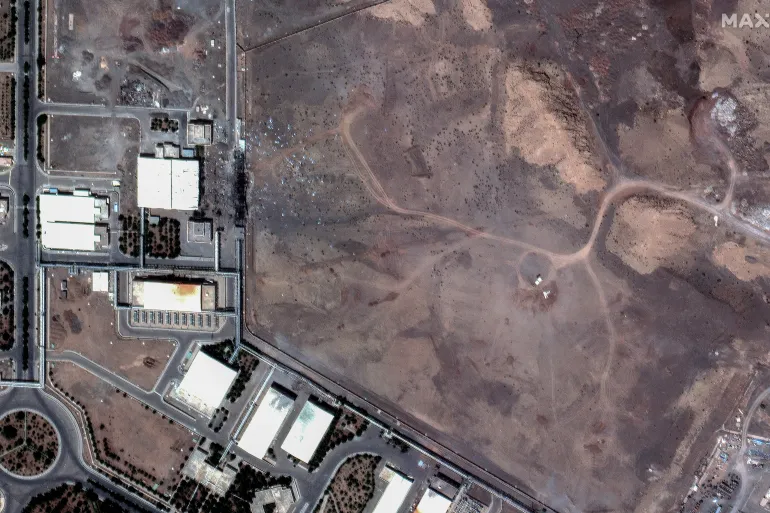Leaked intelligence documents, reviewed by the British newspaper The Times, have unveiled the stunning depth of the Israeli Mossad operations inside Iran.
The report details a multi-year campaign that successfully penetrated the nation’s most secret nuclear and ballistic missile programs.
The intelligence, which was shared with Western allies including the United States and Britain, paints a picture of an Iranian weapons infrastructure far more advanced and widespread than previously understood.
According to the documents, Israeli intelligence, including Mossad and branches of military intelligence, concluded that Iran’s technical knowledge was advancing rapidly and extended well beyond the well-known primary sites at Fordow, Natanz, and Isfahan.
Israeli Mossad Operations on the Ground
A key revelation from the report is the extent of Israel’s human intelligence network.
An intelligence source told The Times that Israel has been monitoring numerous sites within Iran using field agents for years.
Crucially, the source claimed there was “a physical presence on the ground at every site before the attack,” indicating an exceptionally deep level of infiltration.
Israeli Mossad operations were active since at least 2010, when Israel reportedly began preparing for potential strikes based on intelligence about Iran’s accelerating weapons program.
From Intelligence to Military Strikes
The leaked documents provide context for a recent 12-day military conflict, during which Israel targeted and destroyed key Iranian assets.
The Israeli military operation was meticulously planned using intelligence that had identified specific centrifuge production facilities at three sites within Tehran and Isfahan.
The attacks also focused on seven separate components within Natanz facility, Iran’s main enrichment site.
Mossad spies on the ground were reportedly used to map the entire facility, identifying both above-ground and subterranean buildings, including piping networks, uranium feeding systems, and stabilization units. The strikes strategically targeted:
- Electrical infrastructure
- The research and development building
- A transformer station
- The backup generator structure
- Ventilation and cooling ducts
Israeli Mossad Operations Pinpointed High-Value Targets Across Iran
Beyond Natanz, Israel conducted reconnaissance and devastating attacks on other critical facilities in Isfahan.
These included the “Noor” and “Maqdah” sites, which were dedicated to calculations and laboratories, the “Shariati” military site, and a massive hangar at “Shahid Maysami” used to manufacture plastic explosives for nuclear weapons testing.
The documents also indicate a breach of the Iranian Revolutionary Guard Corps (IRGC) headquarters, which was attacked in the final days of the conflict.
Other targeted nuclear sites included “Sanjaran,” which Israel claims was developing components for nuclear weapons.
According to the report, by the end of 2024, Iran had advanced from the research phase to building a sophisticated implosion and radiation system, conducting experiments that would put it “weeks away” from a nuclear capability.
A History of Covert Israeli Mossad Operations and Assassinations
This level of intelligence penetration is not new.
The report notes a long history of covert actions, beginning with the daylight assassination of an Iranian nuclear scientist in 2010, who was the first of five to be eliminated since then.
Israeli Mossad operations have continued, highlighted by the assassination of Hamas political leader Ismail Haniyeh in Tehran last July.
For that operation, the Mossad allegedly utilized Iranian security elements to plant explosive devices in his guesthouse rooms.
More recently, reports suggested that Israeli intelligence had even considered the possibility of assassinating Iran’s Supreme Leader, Ali Khamenei, an idea that President Donald Trump reportedly opposed.
One of the most famous Israeli Mossad operations remains the 2018 theft of Iran’s entire nuclear archive from a giant safe.
Those documents were later used to convince the Trump administration to withdraw from the 2015 JCPOA nuclear deal.
Iran’s Ambitious Ballistic Missile Goals
The intelligence documents reveal the sheer scale of Iran’s ambitions.
The nation was reportedly aiming to produce dozens of long-range ballistic missiles per month, with a goal of manufacturing up to 1,000 missiles annually to build a stockpile of 8,000.
Experts estimate that Iran began the recent conflict with 2,000 to 2,500 ballistic missiles.
According to an intelligence source cited in the documents, Mossad agents visited every workshop and factory that was later targeted, enabling Israel to strike the “entire industry supporting the mass production of missiles.”
Deep Infiltration Sparks Paranoia in Tehran
The repeated Israeli Mossad operations have triggered intense security paranoia in Tehran.
During the 12-day conflict, Iranian authorities arrested dozens of individuals on espionage charges.
A hunt for double agents began in earnest after the Haniyeh assassination, leading to an atmosphere of deep suspicion within the IRGC.
This tension was highlighted last Friday when the Mossad posted a message on the platform “X” (formerly Twitter), warning Iranians to stay away from IRGC officials and regime-affiliated vehicles.
Dr. Efrat Sofer, an Iran-Israel researcher and head of the Ezri Center for Iran and Gulf States Research at the University of Haifa, commented on the long-term nature of Israeli Mossad operations.
“Israel has been monitoring activities inside Iran for decades,” she said.
“The Mossad has played a pivotal role in thwarting the Iranian threat.”


